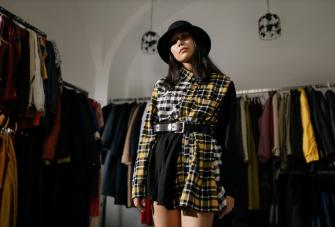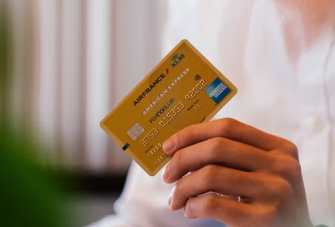How to Price Clothing
Maybe you’ve always wanted to design and sell clothing, but you’re stuck on how much you should be charging your customers. We take a look at what you need to know to set the best prices for your clothing to keep customers coming back and keep you in business.
Start With Your Costs
You may have a target selling price in mind when it comes to your clothing line or to a specific type of apparel you’re trying to sell. However, starting with your retail price is working backwards. You first need to figure out how much each item costs you.
Maybe you imagined selling a pair of pants for €25. But will that be high enough to return a profit?
You’ll need first to determine your cost per unit or how much it costs to make or purchase the finished product to sell to consumers [1].
This includes your production costs (materials, manufacturing, labour) plus any costs you incur for shipping (to you or your storage facility) and any storage or warehouse fees (if applicable) [2].
Depending on the type of business you own, you may also need to factor in things like utilities, rent, and property taxes into your total cost per unit.
If each pair of pants costs you €20 to produce, then you probably don’t want to set a retail price of only €25 if you’d like to earn any profit.
Once you know your cost per unit, you can move on to step 2—choosing the appropriate pricing strategy.
Understand Pricing Methods
You can use two main pricing strategies when setting retail prices for your clothing, and both begin with cost per unit. These models are the absorption pricing model and the keystone pricing (or keystone markup) model. Which pricing strategy you select is up to you.
Keystone Pricing Method
We’re starting with the keystone markup method because it’s probably the most familiar and easiest to calculate [3]. This method takes the cost of the product and doubles the price to sell to a retailer, also known as the wholesale price.
Then the retailer turns around and doubles the price to sell to the consumer, also known as the retail price.
Using the pants example from earlier, your production cost is €20. With the keystone markup method, you’d automatically double the wholesale price to €40 for retailers.
Then retailers would automatically double the retail price to €80 for the end-consumer. This is also known as the retail markup. In this scenario, the retail markup is two times the retailer’s price or a 50% markup.
While this may seem extreme on the surface, this type of pricing strategy ensures that all sellers down the line (retailer, wholesaler, creator) earn a profit on the item and continue operating.
Some business owners in the clothing industry choose to use a factor of three instead of two, multiplying by three each time [5]. For example, if your unit cost is €16, the wholesale price would be €48 (tripling the price), and the retail price would be €144.
Absorption Pricing Method
The absorption pricing method takes a little more math to figure out but may be a better way to calculate the retail price for clothing than simply doubling or tripling the price each time [6]. It “absorbs” all the costs you incur into the pricing structure for your clothing.
Again, you’ll start with your unit cost. However, this time, when factoring in cost per unit, you’ll begin with a formula that adds your manufacturing costs to any overhead costs and administrative costs (rent, utilities, employee salaries, etc.) divided by how many units you’ve produced.
Let’s say those pants cost €20 to manufacture. Then you’ll take overhead and administrative costs divided by how many pairs of €20 pants you’ve produced. Next, you’ll add that number to your manufacturing cost of €20.
If overhead/administrative costs were €28,800, and you’ve already produced 2,400 pairs of paints, then you’d divide €28,800 by 2,400 to arrive at €12 per pair. Add the €12 per pair overhead/administrative costs to your €20 per pair manufacturing costs, and you’ll get €32 as the total unit cost for the pants.
Now you can go to the next step. Take your total unit cost (€32) and add your desired profit margin to come up with a wholesale price. Let’s say you wanted a 50% profit margin, which is fairly average for the clothing industry. 50% of €32 is €16. Add €16 to €32, and your wholesale price is €48.
Finally, to arrive at the retail price, you’ll multiply the wholesale price by any number between 2 and 2.5, giving you a retail price between €96 on the low end and €120 on the high end.
As you can see, there are a few differences between the absorption and keystone pricing methods. The first is in calculating your unit cost. Because the unit cost ended up being higher in our example for the absorption pricing method, your wholesale and retail prices are also affected.
Choosing the Best Method
The above methods are best for your business depending on how much you want to markup your clothing and the type of clothing you plan to sell [7].
Maybe you’d like to sell high-end, designer clothing; if so, you can probably get away with higher markups and higher retail prices.
If you’re trying to compete with a company like Kohl’s or Walmart, which tends to use budget-pricing, you’ll have to lower your prices or your profit margin expectations.
Profit margins at wholesale stores are typically only around 20% for clothing, while high-end stores can have profit margins as high as 80% [8].
You can always increase your profit margins by reducing your cost per unit—but that may require you to select cheaper materials, outsource production, or cut costs in other ways [9].
If, for example, you were able to get your pants to cost per unit down from €32 to €23 per pair, you could still charge the same price but have a higher profit margin.
As you work out the best prices for your clothing, don’t forget to factor in a point of sale system [10]. The best POS systems will add minimal cost while helping you maximize your profits.
A Cost-Saving POS System
While you may be wrapped up in pricing clothing, you’ll need to consider how you’ll be accepting customer payments for that clothing, whether your customers are the retail end-buyer or wholesalers in between.
Your point of sale system should be secure enough to provide seamless online checkout for online shops and versatile enough to allow you to ring up orders and customer purchases via tablet or mobile phone for brick-and-mortar locations.
Epos Now can handle all those things and more and even allows you to track inventory, sales and review real-time reports so you can spot trends or concerns as they happen.
Not only that, but Epos Now is compatible with some of the world’s most popular credit cards, including Visa, MasterCard, and American Express.
Now that you’ve learned how to price your clothing, you’re ready to ring up all those sales.




